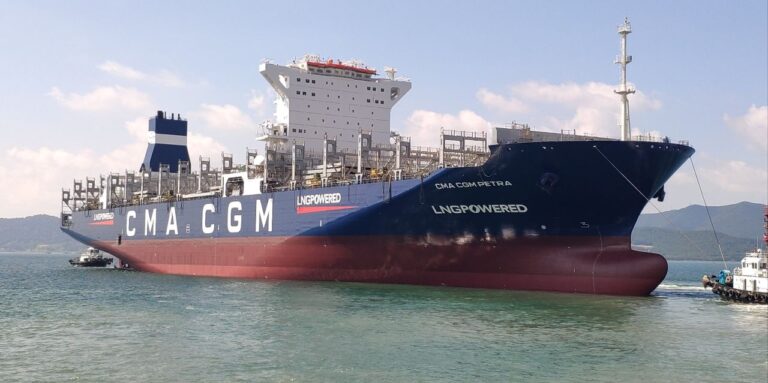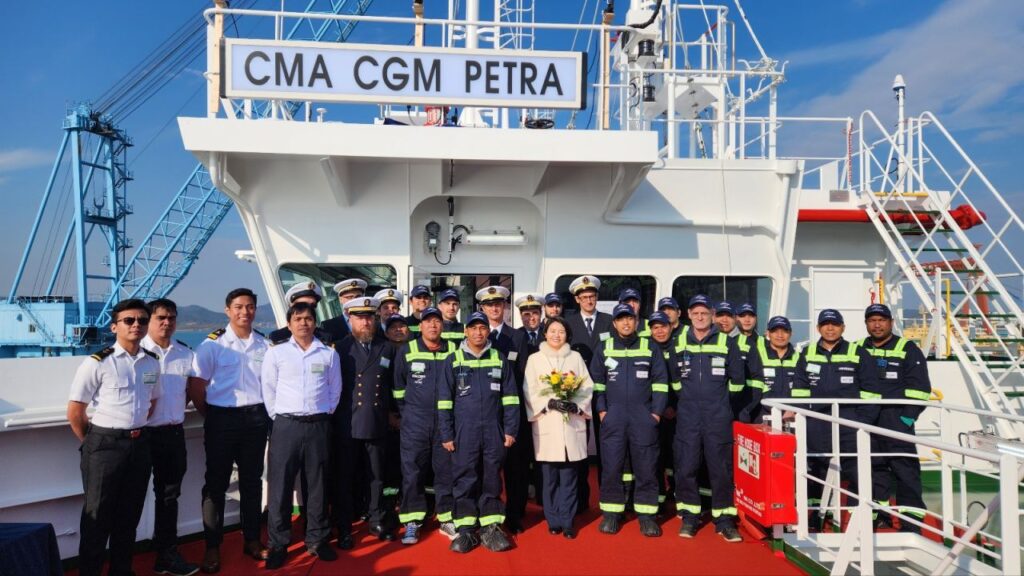France-based shipping titan CMA CGM has launched the 85,700 dwt CMA CGM Petra, the […]
The post CMA CGM’s newest LNG dual fuel boxship touches water appeared first on Offshore Energy.
France-based shipping titan CMA CGM has launched the 85,700 dwt CMA CGM Petra, the first in a series of six container vessels that are set to join the company’s liquefied natural gas (LNG)-powered fleet.

According to London-based data provider VesselsValue, the Post Panamax boxship was built by South Korea’s shipyard Hyundai Samho Heavy Industries (HD Hyundai Samho). It is 272 meters long, with a beam of 42.8 meters and a draft of 14.5 meters. The French-flagged newbuilding possesses a capacity of 8,000 TEUS.
Representatives from CMA CGM have revealed that CMA CGM Petra will be a part of the Asia-Central South America 1 (ACSA 1) service, connecting Eastbound and Westbound trade routes.
As understood, the South Korean yard will construct the remaining five boxships in the series. All built to identical specifications, CMA CGM Petra’s sister vessels are slated for handovers between February and November 2025.

This latest development represents a ‘continuation’ of the collaboration between the French and South Korean majors.
In 2024, the shipyard launched three 8,000 TEU Malta-flagged boxships that it built for CMA CGM, namely, the 86,300 dwt CMA CGM Pointe Du Piton, launched in August, the 86,300 dwt CMA CGM Pointe Noire, launched in December, and the 84,700 dwt CMA CGM Pointe Percee, which also touched the water the same month as Pointe Noire.
Pointe Du Piton was recently revealed to be part of a study done between CMA CGM, HD Hyundai Samho and HD Hyundai Marine Solutions, a marine solutions provider operating under South Korea’s colossal HD Hyundai. The three shipping players came together in October 2024 to develop a standardized life cycle assessment (LCA) model for measuring carbon emissions in shipbuilding and shipping.
As explained, CMA CGM and HD Hyundai Samho will provide information on the containership while HD Hyundai Marine Solutions will use the data to create a ‘global standard’ carbon emission calculation model. Once wrapped up, the company will publish the LCA report and perform third-party verification for ‘trustworthy’ measurement of ship carbon emissions.
Related Article
Content Original Link:
" target="_blank">


























































